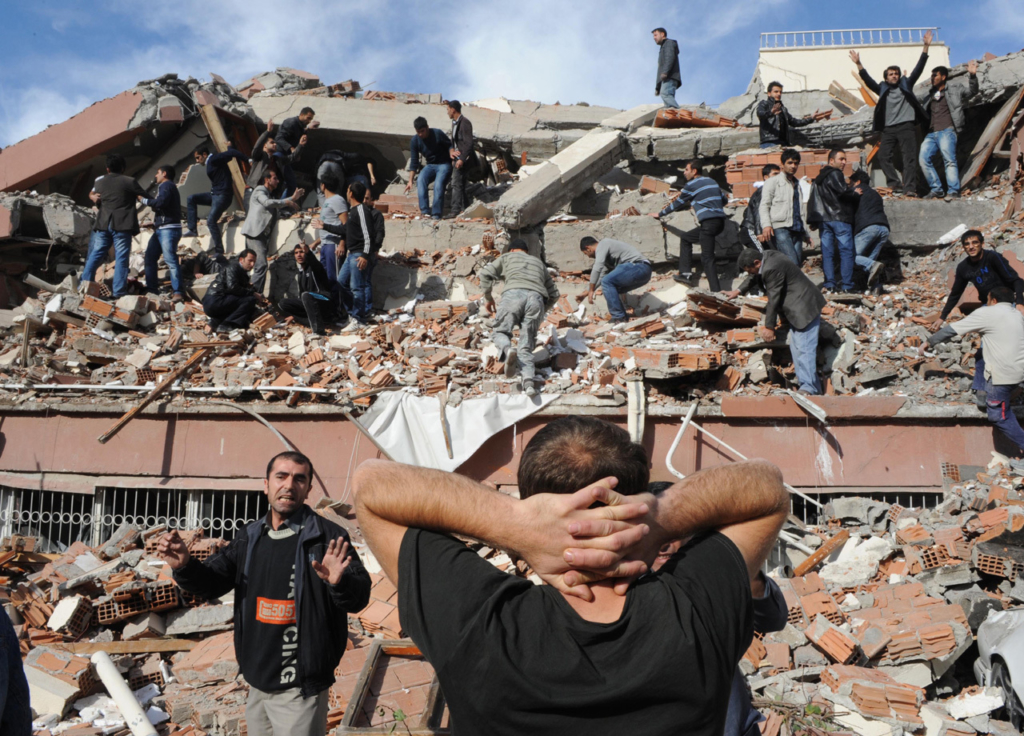Turkish President Recep Tayyip Erdogan has visited the disaster zone in his country as criticism grows over the official response.
Families in some badly-hit areas have said the slow speed of rescue efforts means they have had no help digging to find relatives.
President Erdogan has defended the response, saying it's not possible to prepare for disasters of this magnitude.
More than 11,000 people in southern Turkey and northern Syria are now known to have been killed in Monday's earthquakes.
Erdogan acknowledged there'd been difficulties with the initial response but blamed delays on damaged roads and airports.
In Syria, the White Helmet group who are leading efforts to rescue people in rebel-held areas, say time is running out to save people.
Dramatic footage and pictures are continuing to emerge of rescues in both countries.

Cold weather has seriously hampered rescue response - charity worker
Paul Taylor from disaster response charity Re:Act has travelled to Turkey to help with the relief effort.
Speaking to the BBC from Gaziantep, in southern Turkey, he says the cold weather means vehicles like 4x4s have not been able to reach certain areas.
He adds that in his experience of disaster management, the aftermath of any event of this magnitude is "always chaos," but "things will improve" as more aid arrives.
"What we’re seeing at the moment is a localised response, so government officials, police, military, local NGOs and spontaneous volunteers doing what they can," he says, adding that the international community is now arriving too.
"Eventually things will get better," he says.
'Terrifying scenes' in Syrian town of Jindayris
Many of the rescue videos that have emerged from opposition-held north-western Syria since Monday have come from the small town of Jindayris, where around 50 buildings are reported to have collapsed.
On Tuesday, a doctor at a local hospital said a newborn baby girl who was filmed being pulled from the rubble was in a stable condition. Her mother, father, four siblings and aunt did not survive.
Earlier we learnt from the head of the White Helmets, whose volunteer first responders are leading the rescue effort in opposition-held areas, that more than 300 people are now known have been killed in Jindayris alone.
Raed al-Saleh tweeted that 800 others had been injured and warned that there were “terrifying scenes” on the ground.
“A catastrophic situation, destruction everywhere,” he wrote. “Hundreds of families are still under the rubble, and our teams are working with all their energy in the destroyed locations.”
This drone footage showing the devastation in Jindayris was posted by the White Helmets on Tuesday night.
Credit: The BBC
Latest Stories
-
Pregnant woman killed, 2 others injured by unknown gunmen at Kukpalgu in N/R
2 hours -
Saminu blazes to a wind assisted 9.87 seconds 100m victory
3 hours -
Four killed in gang fight at Wiamoase in A/R
3 hours -
Nhyira FM feeds over 500 Kumasi residents at 2025 fufu party
3 hours -
2025 Easter Football Gala to unite communities in Offinso North set for April 21
3 hours -
Valencia stun Real Madrid for first victory at Bernabeu since 2008
3 hours -
Luis Enrique eyes ‘unbeaten season’ as PSG clinch Ligue 1 title
4 hours -
GPL 2024/25: Basake Holy Stars aiming to break duck against Berekum Chelsea
4 hours -
SIC MD calls for stronger collaboration with brokers to boost Ghana’s insurance industry
4 hours -
Westside school visits Safari Valley Eco-park as part of the Joy FM eco champions project
4 hours -
Evelyn Badu goal gives Bjorkegren first Black Queens win as Ghana beat Senegal
6 hours -
Iranian president sacks deputy for ‘lavish’ Antarctic cruise
6 hours -
Tone down on ‘flash and burn’ politics – Dr. Adutwum urges
7 hours -
“There are issues everywhere” – TDC Boss orders EOCO probe into $1m IT contract, others
7 hours -
Let’s be vigilant, increase surveillance for meningitis – GHS Director General
8 hours

